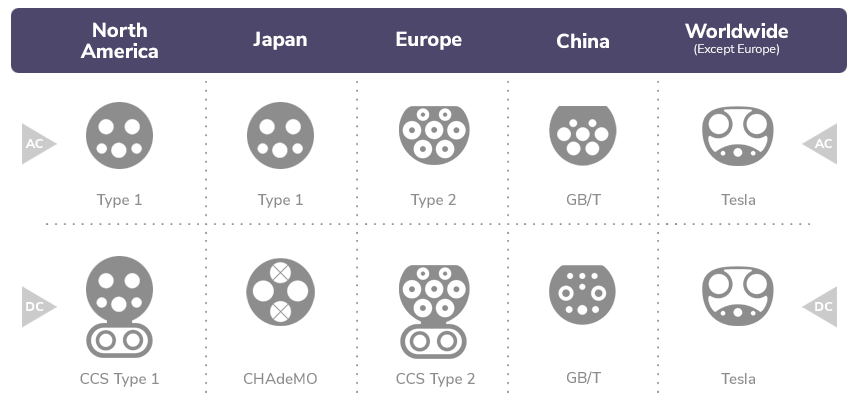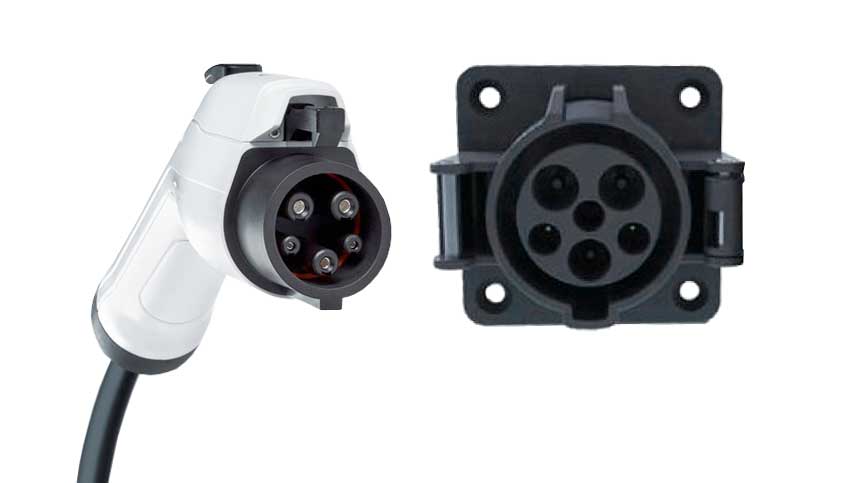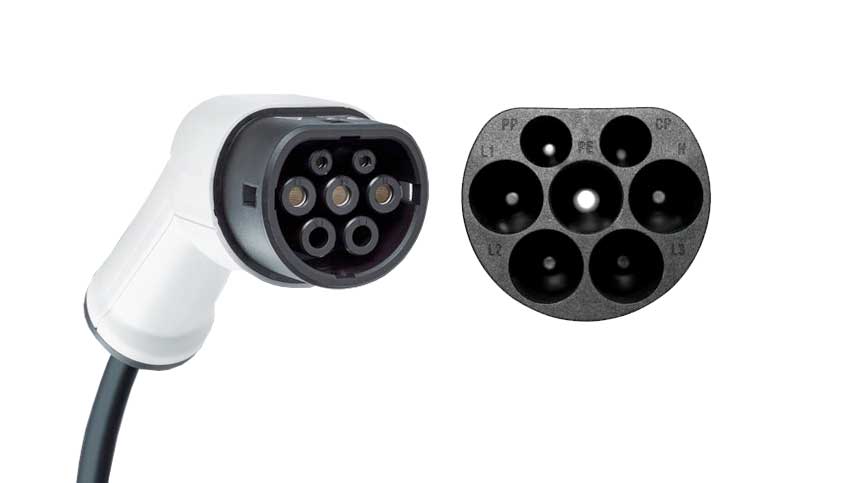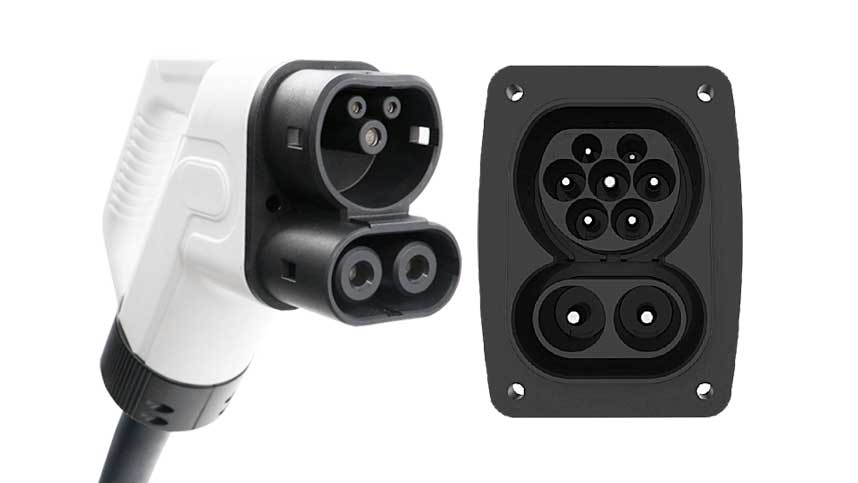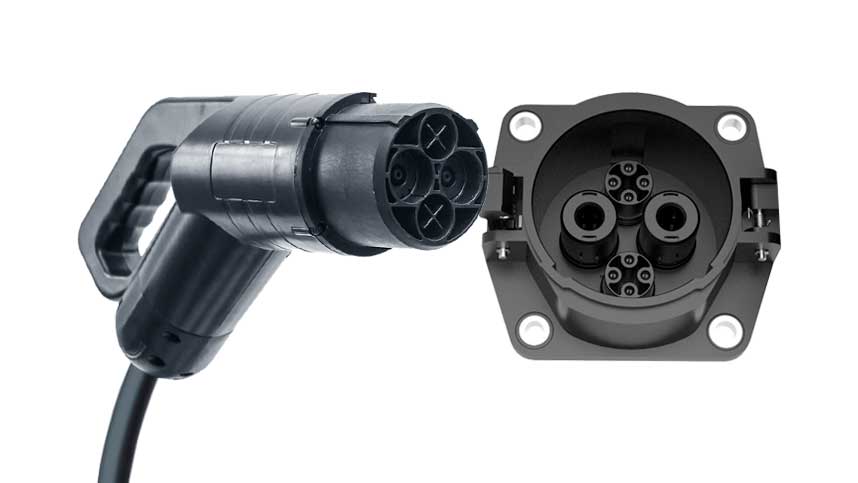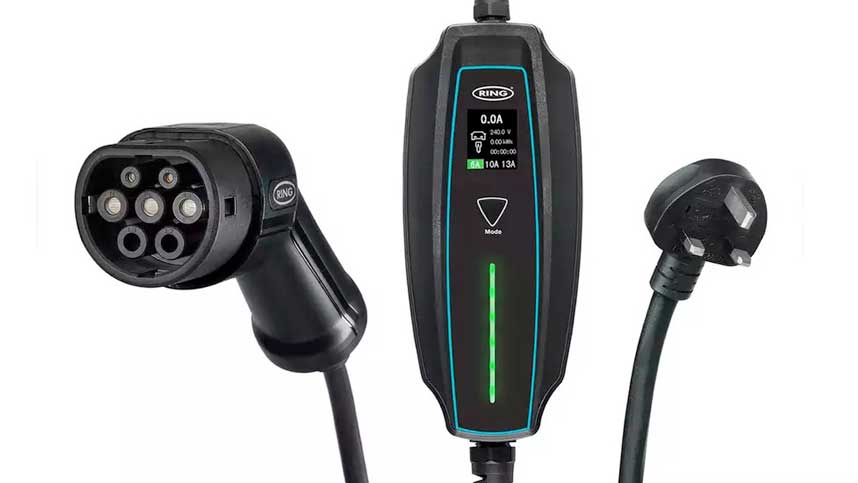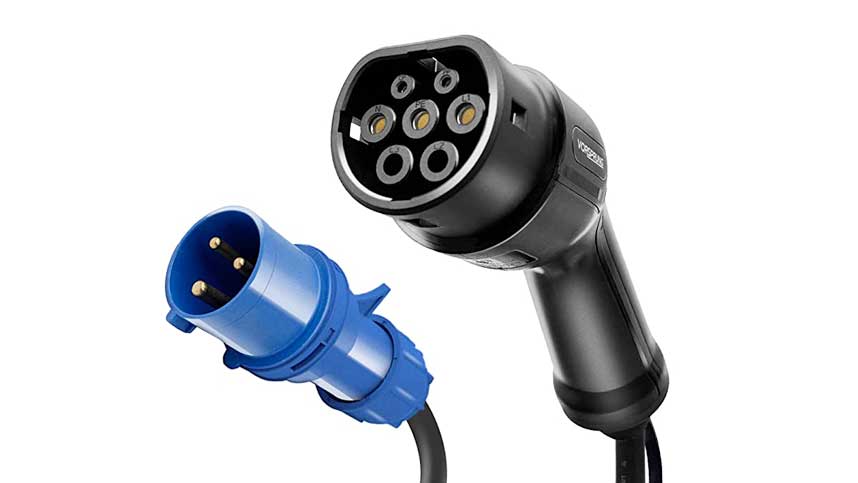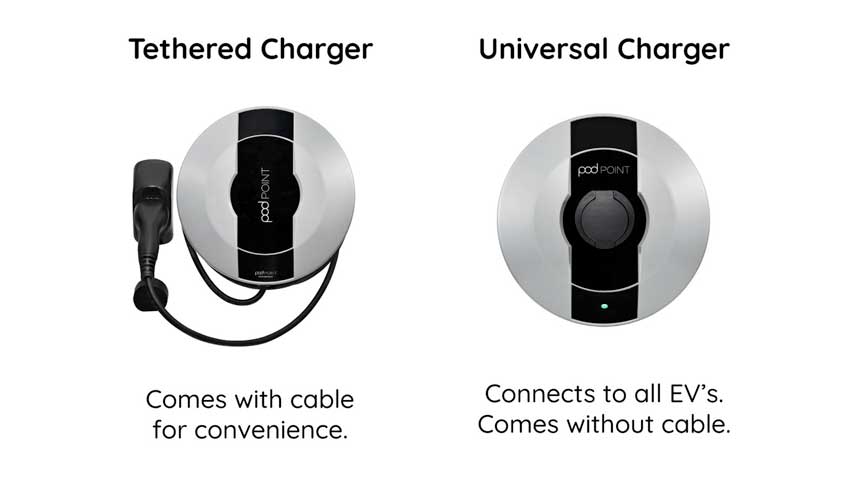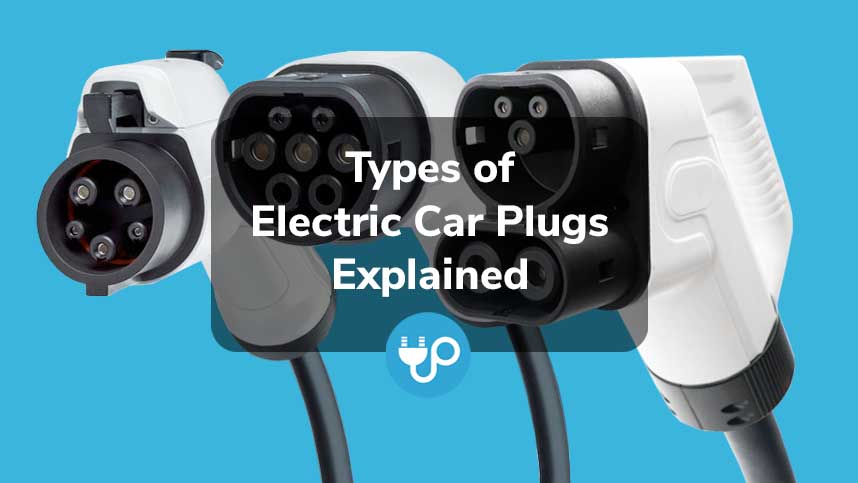
Types of Electric Car Plugs Explained
Owners of an electric car will be familiar with the struggles of charging plugs and their various permutations.
Instead of a standard filler neck that accepts petrol or diesel, there are five different charging plug types.
Most electric vehicle manufacturers are committed to using one or two classes.
This article explains that charging is actually very straightforward and will only get easier.
Chapters
Car Charger Sockets
Electric car charger sockets are similar in execution to your smartphone plug.
In the UK, electric cars can use multiple plugs.
However, it is important to remember that not all cars accept the same plug, nor are their charging ports universal.
Type 1
The Type 1 charging socket is common in America.
However, the Type 2 socket is more prevalent overseas as Europe and mainland Asia have higher concentrations of more modern electric cars.
The Type 1 connector is a five-pin plug designed for AC.
It was deployed on 1st generation electric cars such as the 2011 Nissan Leaf and Kia Soul EV.
The plug can charge anywhere from 3-7 kW, the maximum rate for an AC plug such as this.
It’s common to find this type of plug on older vehicles.
However, newer electric cars will have Type 2 plugs and/or combination charging plugs.
Type 1 plugs are older and somewhat outdated compared to newer charging plugs/receptacles.
They are also not clip-in plugs.
While you are charging, someone can randomly unplug your car without any barrier.
This could be considered a safety hazard if the plug is not fully seated in the charging port.
Motorists can still charge electric cars with Type 1 plugs at major charging points.
The technique is simple, plug in and go.
However, as technology advances, and plugs and charging stations evolve, they will become more outdated and more difficult to charge due to a lack of services.
Type 2
Type 2 plugs are more modern and thus more common across the board.
Electric cars worldwide currently use Type 2 plugs, or CCS (Combined Charging System) plugs as a majority.
Type 2 plugs are seven-pin plugs; current EU legislation requires charging points to accept these, and therefore manufacturers must design them into their cars.
If you have a Tesla, the Model S and Model X SUV use modified Type 2 chargers that allow them to charge at Tesla Superchargers.
Additionally, Teslas can charge at any station that accepts Type 2 plugs.
Type 2 plugs also work with fast and slow-charging configurations to manage power delivery to the battery without straining the building’s electrical wiring.
UK 3-phase home power supply units deliver a maximum of 22kW.
However, you’ll need to ensure that your electric vehicle can accept that power level.
Charging stations for Type 2 plugs charge a maximum of 43 kWh.
So again, you’ll need to ensure your car can handle that.
Like the Type 1 plug, the Type 2 plugs can only handle AC.
However, as charging stations take cars with AC or DC chargers, this poses no issue.
Type 2 plugs are objectively better than Type 1 plugs because they charge faster and transfer power quicker.
Type 2 plugs also lock into the car so no one can remove them without disabling the lock, a security strongpoint.
CCS Type 1 & 2
CCS (Combined Charging System) plugs can handle both DC and AC.
Few electric cars ship with these, no matter the country, but in the EU, more manufacturers are designing electric vehicles with CCS plugs designed.
CCS plugs are advantageous due to their dual systems.
Suppose your electric car has a CCS adapter.
In that case, it can be charged at public DC charging stations or a home AC charger without additional equipment.
Fast charging capability is integrated; CCS systems can transfer a maximum of 350kW depending on the car and charger combination.
Fortunately, the charging procedure is the same worldwide; the CCS plug works for both Type 1 and Type 2 sockets.
CCS plugs are becoming more common globally, especially in Europe, where there are many charging points for multiple types of vehicles or charging plugs.
Tesla has also adopted this type of plug/socket in the UK and the EU.
The Model S and Model X ship with an adapter to make CCS possible; the newer Model 3 saloon has the CCS socket as standard.
Chademo
Chademo is the name of a fast-charging system for electric cars developed in Japan.
Chademo is unique in that it offers fast-charging capabilities while offering directional charging.
Directional charging allows a power source to charge the electric battery or the power source to draw power from the battery.
An electric car can power a house for several days during a power outage.
The Chademo system currently transfers power at a maximum rate of 400kW however, manufacturers seek to increase that rate to 900kW over time.
Chademo was one of the initial DC fast-charging systems adopted by Honda, Toyota, and other manufacturers.
However, Chademo has drawbacks.
It requires two separate plugs to perform slow/fast charging.
One Chademo socket, and one Type 1/Type 2 socket.
While this improves accessibility, it requires unseemly styling concessions.
Domestic Charging
Domestic chargers are standard UK 3-pin outlets.
Most EVs sold in the UK and mainland EU have 3-pin compatible cables supplied as standard for emergency or home use.
The cable end is a standard 3-prong connector for the domestic socket.
The other end is a Type 1/Type 2 plug connected to a small transformer box to convert the current to AC/DC.
Domestic chargers are strictly for emergency use.
Prolonged or repeated electric car charging at home with this method could cause damage to your property's wiring.
This is because standard 16 amp domestic home wiring cannot handle a prolonged power draw.
The charging rate is a maximum of 3kW, standard flow for UK homes.
A large car battery could take several days to get fully charged at that rate.
Hence the recommended restrictions on emergency use.
CEE
CEE connectors are familiar to those with camper vans.
CEE plugs are older and commonly used on early electric vehicles such as the G-Wiz.
They are common at campgrounds for camper hookups.
As the plug is identical to those used for camper vans, any electric car with a CEE plug can use an industrial connection and charge up to 22kW.
Any electric car with a CEE connector is outdated and, therefore, not practical because electric cars are increasingly using Type 2 and newer connectors.
A car with a CEE connector will be serviceable but impractical.
Tesla Supercharger
Tesla Superchargers are driving advances in electric vehicle charging simply through existence.
The plug is unique yet Type 2 compatible moving forward.
All chargers tether (locked to the charging station).
Tesla currently includes CCS-compatible plugs on Model 3 saloons moving forward through 2022.
Superchargers locations are commonplace and will continue to grow in scale.
Tesla is considering opening Supercharger locations to other brands of electric cars.
If they do so, Superchargers will become a more mainstream, practical charging point for all cars.
Superchargers are custom Tesla plugs/sockets but Type-2 compatible in certain instances.
The Model 3 saloon accepts CCS charging plugs, starting from 2022.
If Tesla allows other electric cars to use them, a Supercharger will be the best way to charge.
Car Charging Cables
Electric cars require up to 5 different types of cable to charge.
Teslas require their custom connector; the Model 3 is Type 2 and CCS compatible.
Certain cars need Type 1, Type 2, CCS, or Chademo systems.
Therefore, one size does not fit all.
Mode 2 Charging Cable
The Mode 2 charging cable is a basic car charger cable.
Mode 2 is for charging electric cars at a residence.
Mode 2 cables are recommended for emergency use only.
One end contains a standard UK 3-pin plug, and the other contains the Type 1/Type 2 plug connected to a small transformer box.
Mode 2 can transfer current at a maximum of 3 kWh.
Prolonged use will damage the property’s wiring.
Mode 2 cables are for emergency use only.
Having a Mode 2 cable as the primary charger is impractical and a potential fire hazard with prolonged use.
Mode 3 Charging Cable
The Mode 3 charging cable allows an electric car to be charged anywhere with Type 1/Type 2 charging stations.
Additionally, the Mode 3 plug will work at commercial or residential power outlets.
The charger end features a Type 2 connector, and the car end features a Type 1 or Type 2 plug, depending on the vehicle.
A Mode 3 charging cable is a useful backup.
It is a non-tethered cable, meaning it does not lock into the car.
However, the ability to plug into any charging point is extremely valuable, as it allows the car to be charged anywhere in the UK or EU.
What is Tethered and Untethered?
Tethered charging refers to charging cables that are permanently attached to the station.
The cable hangs on the side of the station and unreels to charge the car.
The plug locks into the car’s socket for security reasons.
An untethered charger essentially means it has no integrated cable.
When in use, the cable is not locked to the charging station, nor does it lock into the car’s charging socket.
Untethered cables do not physically perform worse, but they are not as secure as tethered cables.
Depending on the charging station, there may not be a choice between the two.
Is Wireless Charging Possible?
Wireless charging for electric cars operates on the same principle as smartphone charging.
The customer must park the car over an induction pad.
A sending unit in the pad connects to a receiver in the car battery.
The pad transfers energy using magnetic coils.
One is in the actual pad, and the other is in the electric car.
So yes, wireless charging is possible, with many car manufacturers spending millions in research to develop this technology.
However, the technology has yet to deploy at scale.
It could potentially take decades before wireless car charging is commonplace.
Conclusion
Electric cars are becoming more prevalent, so it’s inevitable they will replace fossil-fuel-powered automobiles at some point in the future.
Currently, up to 5 types of charging cables are necessary, depending on the vehicle.
Ergonomically, multiple cable types create problems from an accessibility standpoint.
However, cable and charging technology advancements will eventually produce standardized car chargers, reducing headaches and improving charging experiences.
Blog Archive
- 25 New Electric Car Brands on UK Roads
- General Election 2024: Major Party Net Zero Policies Compared
- Electric Car Service Costs vs ICE
- CHAdeMO vs CCS – What’s the Difference?
- Mr EV Reviews Joosup
- What is the ZEV Mandate?
- Spring 2024 Budget: No VAT Rate Cut on Public EV Charging
- What is Regenerative Braking?
- Joosup Powers Up Inaugural Everything Electric Show
- Do Electric Cars Pay Congestion Charges?
- The UK Government is Failing Its Own Targets – EV Charger Sharing Can Plug the Gap!
- Do Electric Cars Have Gears?
- Is EV Battery Recycling Possible?
- Christmas Commuting – How to Avoid EV Charge Rage
- Electric Car Tyres – All You Need to Know
- What Price Should I Rent My EV Charger Out?
- Are Electric Cars Cheaper to Run?
- Do Electric Cars Use Oil?
- 70% of UK Councils Have No On-Street EV Charging Plans
- Joosup + waEV-Charge: Electrifying the Future Together!

